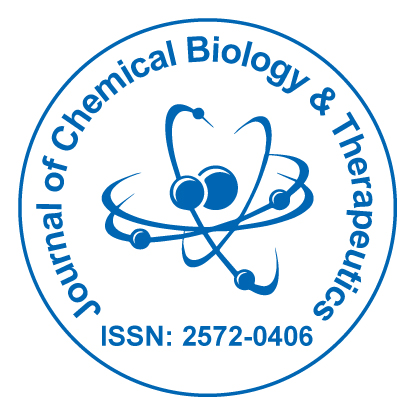Our Group organises 3000+ Global Conferenceseries Events every year across USA, Europe & Asia with support from 1000 more scientific Societies and Publishes 700+ Open Access Journals which contains over 50000 eminent personalities, reputed scientists as editorial board members.
Open Access Journals gaining more Readers and Citations
700 Journals and 15,000,000 Readers Each Journal is getting 25,000+ Readers
Indexed In
- RefSeek
- Hamdard University
- EBSCO A-Z
- Publons
Useful Links
Share This Page
Lin Li

Lin Li
University of Texas at El Paso
United States
Biography
Education and work experience:
•Research Associate (Biophysics), Clemson University, 2013-now
•Post Doct (Biophysics), Clemson University, 2011-2013
•Ph.D. (Biophysics), Huazhong University of Science and Technology, 2005-2011
Research experience:
DelPhi Development: DelPhi is a widely used Poisson Boltzmann Equation solver. I have developed a Gaussian smooth method to DelPhi software, which is used to model the inhomogeneous dielectric properties of macromolecules. This method has been proved to be more accurate than the traditional 2-dielectric constant methods.
MEMPOT: A Membrane Potential (MEMPOT) tool is developed and implemented into DelPhi program. Using this MEMPOT tool, one can easily calculate the electrostatic potential distribution across the membrane.
ASPDock: He have developed a docking algorithm (ASPDock) to calculate binding free energy of protein complexes, which improves the accuracy of prediction effectively. Comparisons with other state-of-the-art docking algorithms showed that ASP score indeed gives higher success rate than the pure shape complementarity score of FTDock.
SRM: He also developed a Softly Restricting Method (SRM), which utilizes the unreliable binding site information to enhance success rate of docking. It only reduces hit count number and success rate slightly if the predicted information is completely wrong. However, when the predicted information is correct or partially correct, SRM increases the hit count number and success rate significantly.
CAPRI: Using ASPDock and Softly Restricting Method, his team has participated in two rounds of Critical Assessment of PRediction of Interactions (CAPRI). We got high-quality hits for T40 and T41 and the best LRMSD were 2.35 Å and 1.41 Å, respectively.
Awards:
2001-2002: HUST Scholarship
2002-2003: National Scholarship by Chinese Government
Skills and Software
Programming language: Fortran/C/C++/Bash/Matlab
Molecular Simulatons: DelPhi/Tinker /NAMD
Protein-protein docking: ASPDock/SRM/FTDock/ZDOCK/GRAMM
Graphic: Chimera/PyMOL/Photoshop/Flash
Homology Modeling: SWISS-MODEL/I-TASSER
Research Interest
1.Protein electrostatic calculations ;
2.Molecular dynamic simulations;
3.Protein-protein interactions, Protein-RNA/DNA interactions, Protein-ligand docking;
4.Structure, function, chemistry, and in vivo modification and processing of proteins, nucleic acids, and other biologically important macromolecules;
5.Computational method for protein/DNA/RNA simulations.
Certificate
Global Speakers in the subject
Global Experts in the subject
Publications
High Throughput Detection Methods for Multiplex Mycotoxins
| Jianli Jia, Haibin He, Zihao Wang, Shenwei Zhao, Linying Me, Jialin Liu, Shihai Zhang, Cunzhen Liang and Yinghua Zhang |
| Research Article: J Bioremediat Biodegrad 8: 407 |
| DOI: 10.4172/2155-6199.1000407 |
BTG1 Low Expression in Pancreatic Ductal Adenocarcinoma is Associated with a Poorer Prognosis
| Jianlin Li, Yang Deng, Yan Liu, Zhi Ding, Yichen Li, Yanhao Jin, Xuerui Zhu, Tingting Cai, Tiesong Zheng and Wei Li |
| Review Article: Toxicol Open Access 2017, 3:131 |
| DOI: 10.4172/2476-2067.1000131 |
| Yufang Huang, Jiawei Zheng, Ting Tan, Li Song, Shanshan Huang, Yan Zhang, Lin Lin, Jingnan Liu, Peichan Zheng, Xiong Chen, Xi Chen and Xuenong Ouyang |
| Research Article: Diagn Pathol Open 2017, 1: 126 |
| DOI: 10.4172/2476-2024.1000126 |
Panax Notoginsenosides Attenuates Pleural Inflammation in Rabbit Model
| Fenglian Chen, Chunhua Yang, Linlin Liu, Tianyi Liu, Yang Wang, Lichao Wang, Yanguo Shi and Osvaldo H Campanella |
| Research Article: J Rice Res 2016, 5: 178 |
| DOI: 10.4172/2375-4338.1000178 |
A Preliminary Study on Multivariate Prediction of Seizure Outcome after Epilepsy Surgery
| Helin Zhang, Ruilin Liu, Hongle Yang, Zhichao Wang and Chenli Li |
| Research Article: Cell Mol Biol |
Genome-wide Gene Expression Profiling: An Excellent Tool to Study Virus- Host Interactions
| Jing Zhang, Hui Chen, Weifang Liu, Qingzhu Liu, Shanshan Mei and Yunlin Li |
| Research Article: OMICS J Radiol 2014, 3: 156 |
| DOI: 10.4172/2167-7964.1000156 |
New Endoscopic Diagnosis and Treatment Options for Early Esophageal Cancer
| Limin Chen, Shilin Li, Yujia Li, Xiaoqiong Duan and Ian McGilvray |
| Editorial: J Biochip Tissue Chip 2012, 2:e118 |
| DOI: 10.4172/2153-0777.1000e118 |
| Quan-Lin Li, Yun-Shi Zhong, Wei-Feng Chen, Meng-Jiang He, Ping-Hong Zhou and Li-Qing Yao |
| Review Article: J Gastrointest Dig Syst 2012, 2: 108 |
| DOI: 10.4172/2161-069X.1000108 |

 Spanish
Spanish  Chinese
Chinese  Russian
Russian  German
German  French
French  Japanese
Japanese  Portuguese
Portuguese  Hindi
Hindi 